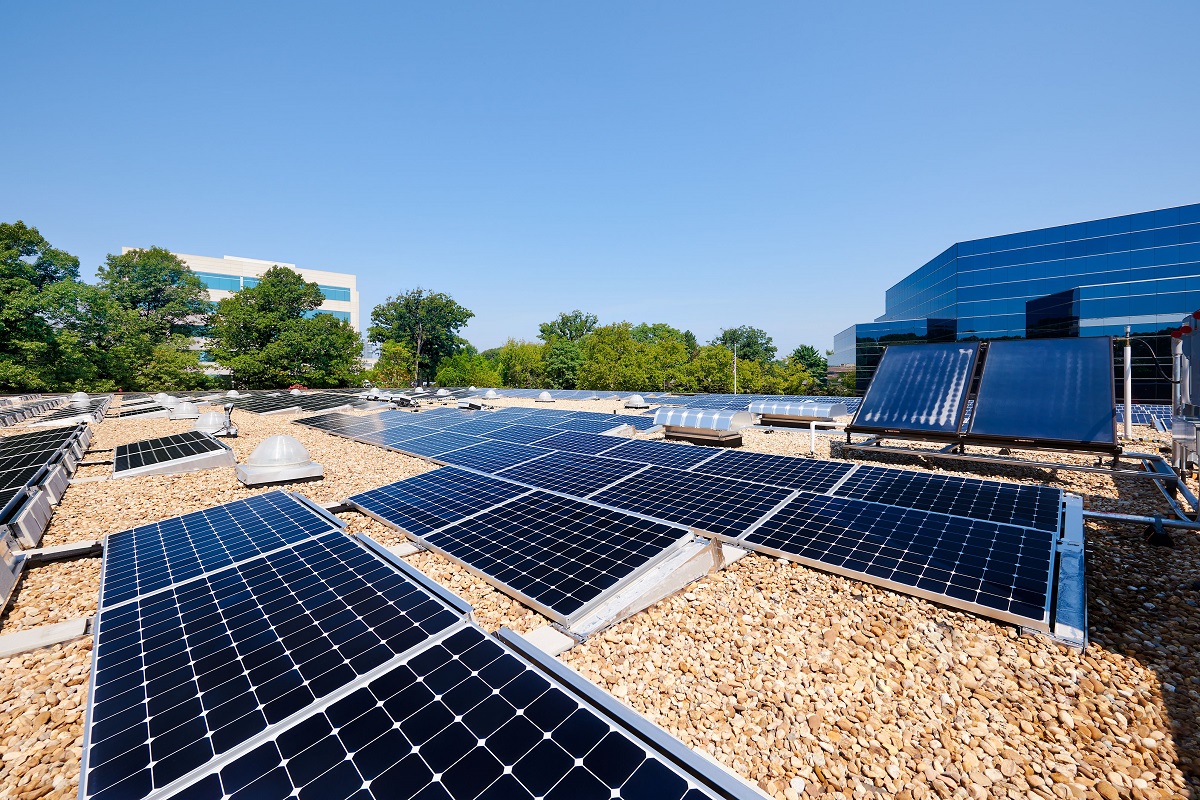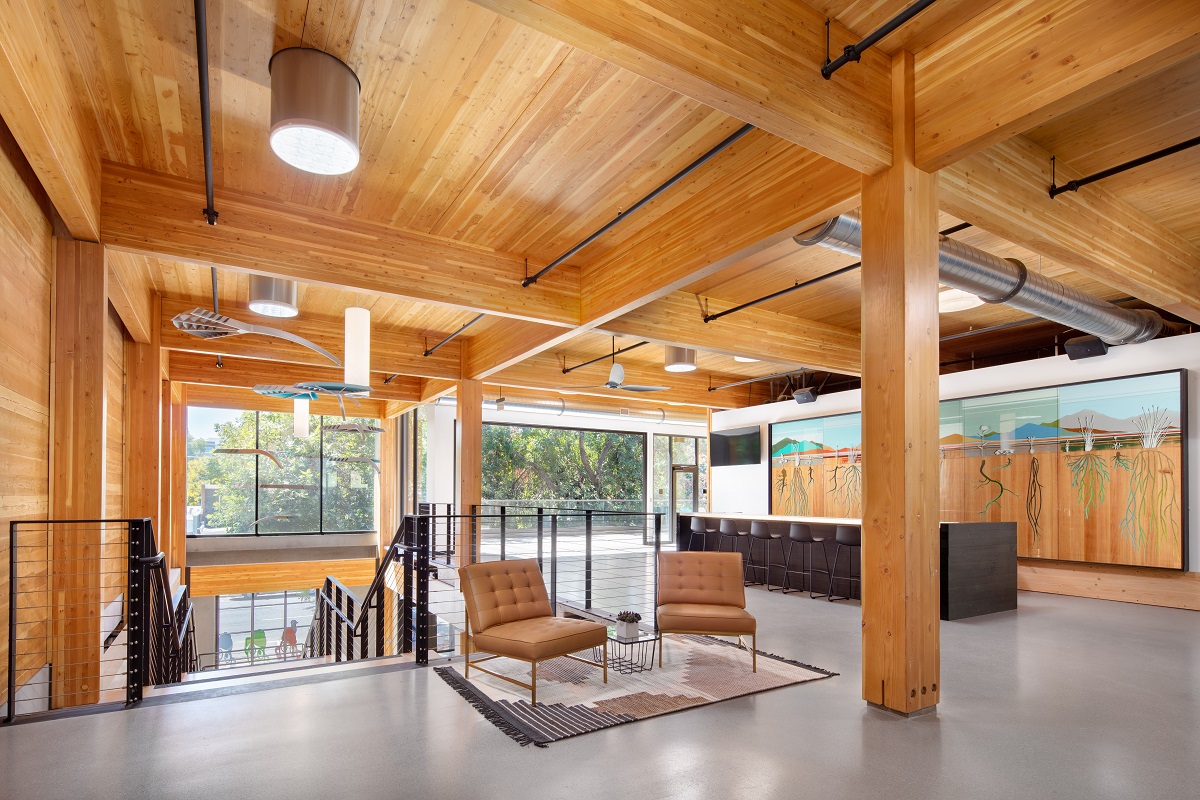Green Building: Pathway to Profit and Resiliency
DPR Construction’s Ryan Poole on how the benefits of green building are transforming architecture, engineering and construction.
With the building sector substantially contributing to energy consumption and carbon emissions across the world, the importance of green building practices are outgrowing the conceptual framework. DPR Construction Global Sustainability Leader Ryan Poole talked with Commercial Property Executive about the construction industry trends that shaped the year that is about to end, and also touched on challenges ahead.
How would you describe the evolution of green building practices in 2022?
Poole: The year 2022 has been a big one for unity in the architecture, engineering and construction (AEC) community, especially for contractors. We’ve increased alignment across the industry by creating more spaces to collaborate as we remove barriers and drive toward our collective goals. To deliver real impact, we must work together toward the same mission. The future of our planet and species is dependent on our ability to develop a more sustainable future.
The focus on operational emissions within design has continued to grow toward a net-zero future, while the industry also takes a much closer look at how to analyze and tackle embodied emissions. As more building operators prioritize ESG as a main corporate strategy, we’ve seen more support for sustainable building practices that create a healthier future for people and the planet and, we believe, better value and long-term costs for them.
What major trends shaped the year in the construction industry?
Poole: Carbon reduction, resiliency, occupancy wellness and equity have been the biggest trends that have shaped the construction industry this year. We now have a more aligned framework around carbon accounting than ever before, though we still have a long way to go.
With the return-to-office as the pandemic calms, we’ve seen a continuous increase in focus on how spaces provide a nourishing environment for occupants. Last but certainly not least, we’ve been holistically focusing on equity by increasing education and providing tools with an agreeable framework.
How do you reduce the carbon footprint of the projects you work on? How can you improve your process in the following years?
Poole: DPR has developed an in-house best practices playbook that provides teams with a pathway and resources to create customized project plans to push more sustainable building practices. The DPR playbook supports the industry-aligned framework within the Contractors Commitment, working to reduce carbon footprint, improve job site wellness, reduce water consumption, reduce and recycle waste, and select responsible materials.
Our big focus for improvement is further collaboration among the entire AEC industry, including manufacturers and suppliers. Open communication, aligned metrics and accounting methodology are vital components to ensure that the future of reducing emissions is achievable.

Solar panels atop DPR’s Reston, Va., office. Image courtesy of Hoachlander Davis Photography via DPR Construction
What about water and energy footprints? What solutions are there now, and what are your hopes for the upcoming years?
Poole: There are many incredible platforms that not only help track your energy and water consumption through automation, but they can also help control building systems to increase performance. DPR uses a platform to collect consumption and production data across all our portfolio of offices, which helps streamline our footprint calculations.
Measuring, monitoring and maintaining are crucial steps when operating a high-performance building. DPR uses its own offices as living labs, testing innovative, green building solutions and showcasing our ability to deliver this level of a facility to our clients at market rates through integrated project delivery in early planning stages.
Recent events have people looking at water use like never before. Droughts, watershed management and more are making headlines. We expect to see an increase in interest in rainwater capture, greywater use, lower-water-use design and more. Combine this with proven methods to lower energy use and generate energy on site, and the next building boom could feature the most sustainable buildings yet.
READ ALSO: Western US Drought—How It Impacts CRE
Which are the industry’s biggest challenges you’ve faced in 2022? How did you overcome them?
Poole: Supply chain issues, rising costs and balancing the budget with goals.
Planning has been vital in addressing supply chain challenges. Think about dinner: If you decide at 5 p.m. what you want to eat at 7 p.m., you may or may not get all the ingredients you want, or a reservation if you’re eating out. If you plan that dinner a few days ahead, you probably will not only find everything, but you will have the chance to find it at the best value. That’s an oversimplification, of course. But the farther out a customer plans with a designer and a contractor, the more opportunities are to source materials and prefabricate elements when supplies and labor are at the best value and more.
Often, we approach projects without having the entire team onboard early in the planning phase. This creates compression of the schedule and budget once the contractors review the design for constructability, sequencing, procurement, schedule and, of course, cost. Proper planning through integrated project delivery helps alleviate that stress by allowing partners ample time to source the best materials to construct your building.
Can you reveal a few details about the projects you are currently working on and the green elements that these developments will feature?
Poole: While mostly under NDA, we are working on some of the most sustainable projects across our core markets—advanced technology, life sciences, health care, higher education and commercial. Some of the green elements featured in these projects range from geothermal, prefabrication, solar, passive design, dynamic glazing, low-carbon concrete, mass timber, Solatubes, radiant heating, electrified equipment, cleaner fuel, water reclamation, rainwater capture, and much more. We are honored to be building some of the world’s largest zero-energy campuses that are designed and constructed with occupancy wellness as a priority.
ESG considerations are generally part of companies’ investment framework, but how do you think these will be impacted by the current market volatility and stress? Is the ESG commitment strong enough to supersede (possibly) waning profits?
Poole: Sustainability has become embedded as a profitable practice within organizations and not just a way to showcase commitment to environmental and social responsibility. We’ve seen a massive shift within the financial sector validating the investment strength in companies with good ESG practices.
In addition to this market shift, we’ve seen a push from consumers as well. Even before the SEC had ESG under the microscope, consumers around the world were making decisions that gave an advantage to firms that were producing more sustainable buildings.
We see recruits who say that they want to work for firms that are focused on sustainability. We know that, once a building moves from CapEx to OpEx, higher performance buildings save money over their lifespan.
We know occupants are more focused on how the spaces they work and live in contribute to their health. With companies paying more than $20,000 per employee for health insurance premiums, there is a huge incentive to have a healthier workforce and drop that premium.
Most importantly, when it comes to building a high-performance building, the premium over a baseline building is minimal and, with the right planning, nearly competitive with market rates. Figuring in the lower energy and water costs after that makes the payback period shorter than ever. Sustainability is a pathway to profit and resiliency.
What has a harsher impact on your industry—rising interest rates or inflation?
Poole: This is a balancing act in our industry and sometimes one can be an indicator of the other. Painting with a broad brush, historically, when rates are increasing and costs rise, developers and building operators construct less. That said, consider two things.
One is that those two factors are affecting every industry at the same time, so while there are adjustments, it’s not like construction is the only industry affected. Secondly, the construction industry, historically, has a lot of waste in its processes. The “design, then bid, then build” model of contracting is, in and of itself, inefficient. More collaborative methods like “design-build” can be more efficient. The ability to use virtual design and construction to effectively build a project once on screen before its real-life counterpart can surface both issues to resolve and opportunities to work more efficiently.
Prefabrication is changing the game, as well, creating new opportunities for schedule and cost benefits. Let’s use the disruption in economic trends to disrupt where the inefficiencies have been. That way, everyone involved in a project will get better value now and well into the future.
What do you foresee in green building in the upcoming year?
Poole: In the upcoming year we will see a greater focus on carbon accounting and reduction methodology across the board as we help facility operators develop more resilient, healthy spaces. We’re going to see more and more buildings aiming for net-zero energy and, while not all will achieve it, we need to step back and ask, “If 80 percent of buildings are using 80 percent less energy than they were a generation ago, isn’t that an amazing feat?”
And we’re going to see a real discussion of how ESG goals and climate commitments align with company real estate portfolios. A lot of firms set those goals with operations in mind and will start to see they need to consider the places where those operations take place. We will also see a continued focus on piloting innovative low-embodied carbon building materials that cut emissions from traditional methods significantly.









You must be logged in to post a comment.